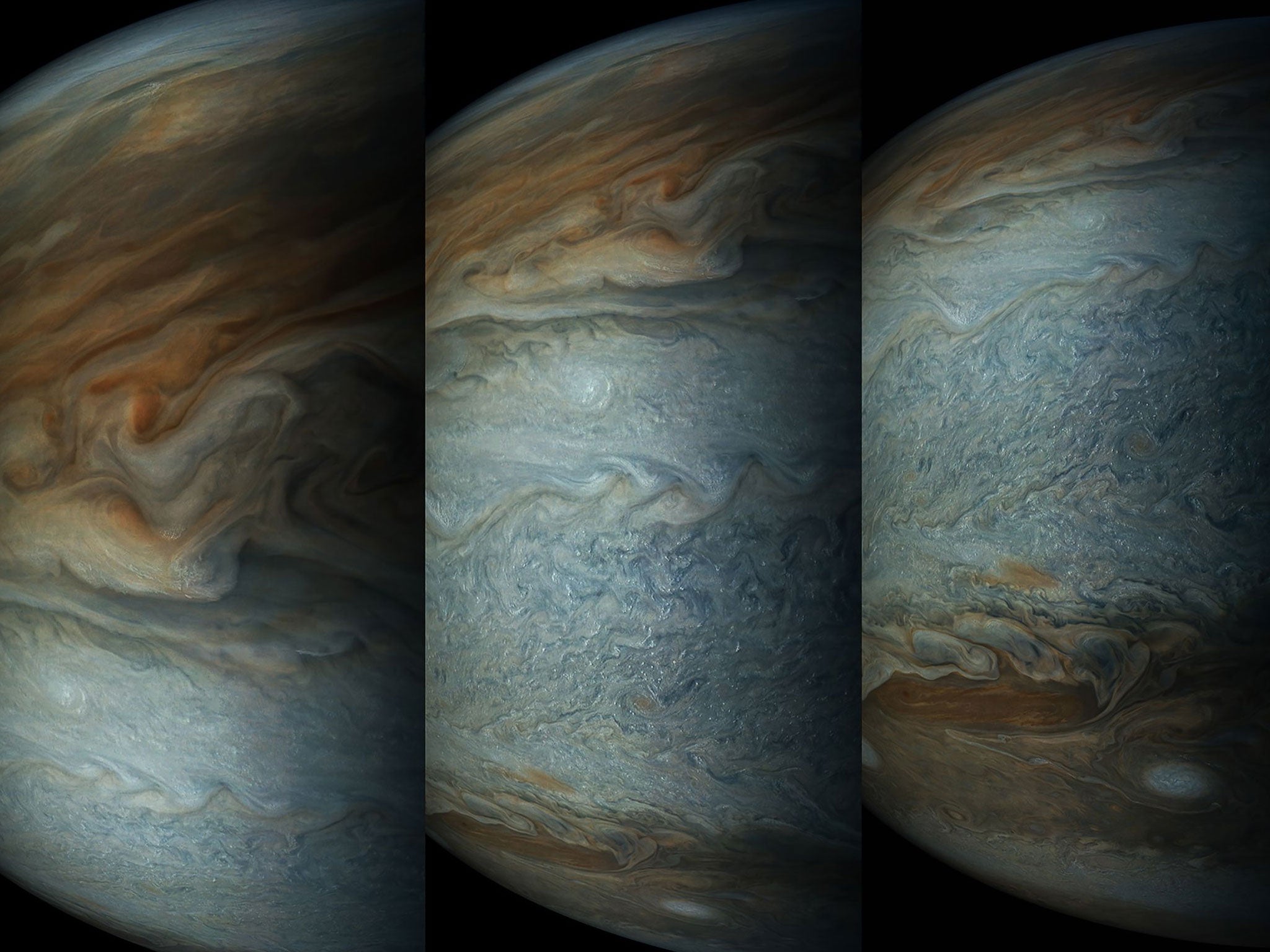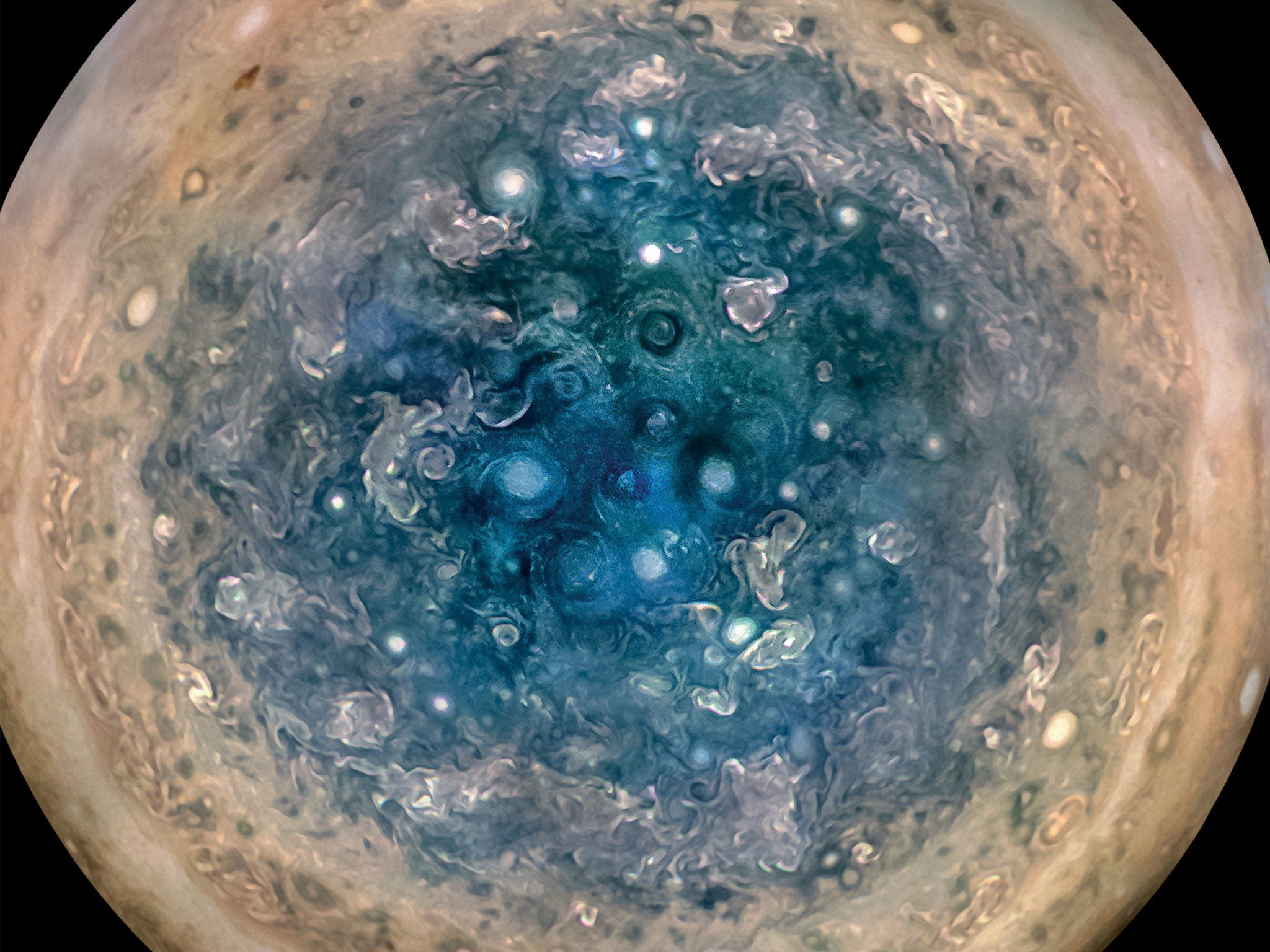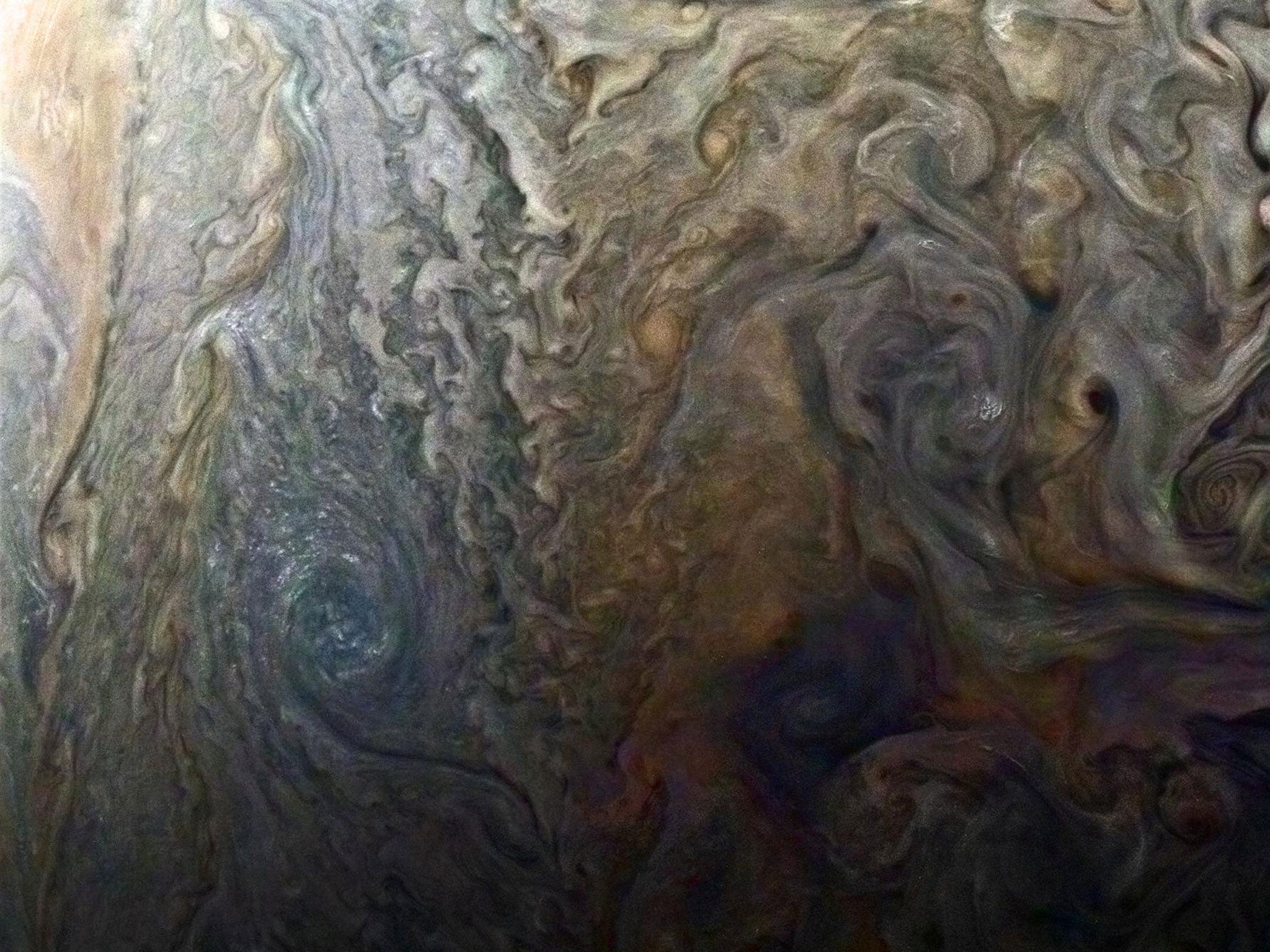Jupiter: Nasa's Juno spacecraft finds Earth-sized storms raging above the planet's poles
Space agency also discovered the gas giant's magnetic field is much stronger than previously thought

Your support helps us to tell the story
From reproductive rights to climate change to Big Tech, The Independent is on the ground when the story is developing. Whether it's investigating the financials of Elon Musk's pro-Trump PAC or producing our latest documentary, 'The A Word', which shines a light on the American women fighting for reproductive rights, we know how important it is to parse out the facts from the messaging.
At such a critical moment in US history, we need reporters on the ground. Your donation allows us to keep sending journalists to speak to both sides of the story.
The Independent is trusted by Americans across the entire political spectrum. And unlike many other quality news outlets, we choose not to lock Americans out of our reporting and analysis with paywalls. We believe quality journalism should be available to everyone, paid for by those who can afford it.
Your support makes all the difference.Earth-sized storms are swirling violently above Jupiter's poles, Nasa's exploratory spacecraft Juno, which is circling the gas giant, has found.
Stunning images of the planet's super cyclones have confounded scientists, who until now have largely believed that Jupiter was relatively boring.
They show that both of Jupiter's poles are covered in huge storms that are densely clustered and rubbing together.
Juno found dozens of cyclones measuring hundreds of miles wide, alongside unidentifiable weather systems stretching thousands of miles.

The findings, recorded by the spacecraft last August but only published this week in two papers in the journal Science, are being hailed as a major leap forward in Nasa's understanding of Jupiter.
"Earth-shattering. Or should I say, Jupiter-shattering" is how Juno's chief scientist, Scott Bolton, of the Southwest Research Institute, described them.
"I don't think anybody would have guessed this is Jupiter."
Some of the plunging storm systems travel deep into the heart of the gas giant.
The images show that the poles look nothing like Jupiter's equatorial region, which is instantly recognisable by its stripes and Great Red Spot, itself a raging hurricane-like storm.
"We're puzzled as to how they could be formed, how stable the configuration is, and why Jupiter's north pole doesn't look like the South Pole," Mr Bolton said of the swirling storms.

Early results from the seven-year mission also revealed a "mammoth, lumpy magnetic field" that is much stronger than previously thought.
"Juno is giving us a view of the magnetic field close to Jupiter that we've never had before," said Jack Connerney, Juno's deputy principal investigator and the lead for the mission's magnetic field investigation at Nasa's Goddard Space Flight Centre.
Scientists have always known that Jupiter has the most intense magnetic field in the solar system.
But measurements by Juno of the planet's magnetosphere indicate that Jupiter's magnetic field is even stronger than models expected.
At 7.766 Gauss, it is in fact about 10 times stronger than the strongest magnetic field found on Earth.
Juno began its almost five-year journey to Jupiter in August 2011, entering the planet's orbit in July 2016. It will conduct 37 orbits lasting a total of 20 months, providing the best close-up views ever of our solar system's largest planet, before scientists end its mission by crashing it into Jupiter next February.
The space probe is in a polar orbit, with the majority of its time spent well away from the gas giant.
Once every 53 days it begins a two-hour fly-by, crossing from one pole to the other, to collect data and take pictures.
Transmitting the files back to Earth for each close orbit can take one-and-a-half days.
"Every 53 days, we go screaming by Jupiter, get doused by a fire hose of Jovian science, and there is always something new," Mr Bolton said.
"On our next flyby on 11 July, we will fly directly over one of the most iconic features in the entire solar system – one that every school kid knows – Jupiter's Great Red Spot.
"If anybody is going to get to the bottom of what is going on below those mammoth swirling crimson cloud tops, it's Juno and her cloud-piercing science instruments."
Subscribe to Independent Premium to bookmark this article
Want to bookmark your favourite articles and stories to read or reference later? Start your Independent Premium subscription today.
Join our commenting forum
Join thought-provoking conversations, follow other Independent readers and see their replies
Comments